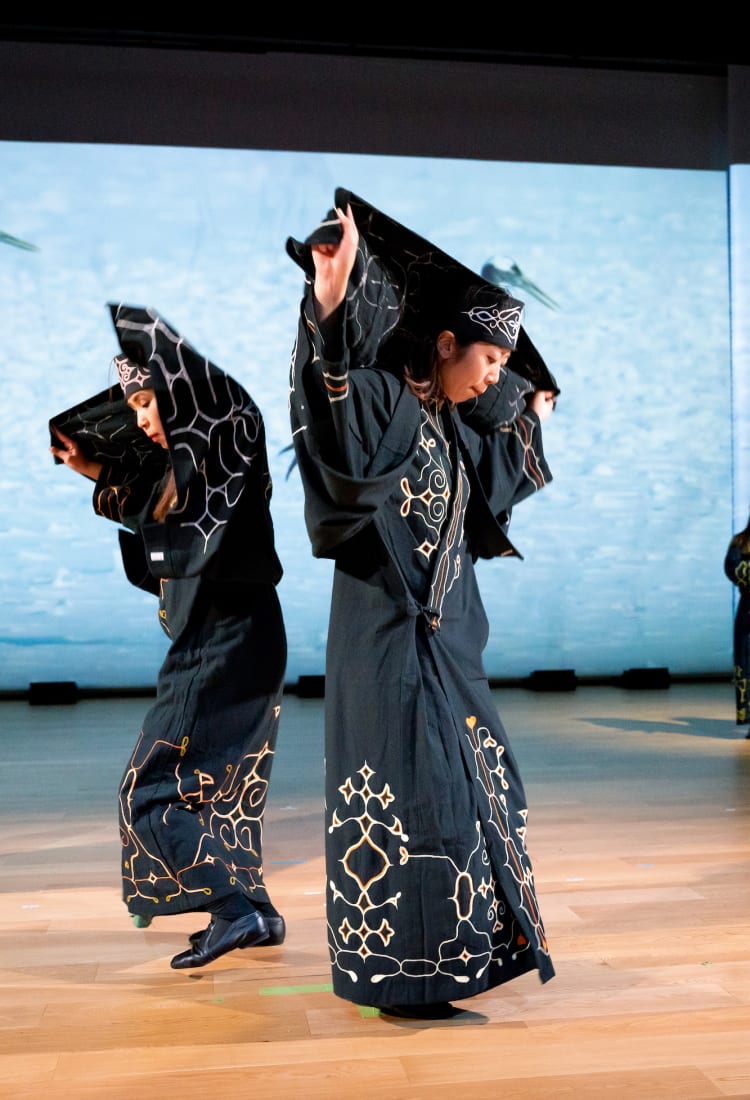
2022.09 Exploring Ainu Culture and the Historical Treasures of Hokkaido Visit Japan’s far North to Discover Ancient Tradition Anew
A traditional Ainu dance representing cranes teaching their young to fly
Photo credit: The Foundation for Ainu Culture
To communicate a sense of pride and change minds about who the Ainu really are, they are turning to education and cultural preservation to make sure their traditional way of life and philosophies are passed down to the next generation. Visitors to Hokkaido can have a deep and meaningful experience learning about these indigenous people and their lives throughout Japanese history.
An introduction to the Ainu people
The Ainu are a people rich in cultural traditions and who lead a lifestyle that has a deep respect for nature. Indigenous to the northern reaches of Japan, it is well known that they inhabit Hokkaido, but they could also be found historically in the Kuril Islands, the Kamchatka Peninsula and Sakhalin Island.
The Ainu people have much to celebrate in recent years, with the Japanese government recognizing their indigenous status, and parts of their culture becoming listed as UNESCO heritage. This is thanks to the superb efforts of the Ainu in keeping their culture and language alive. There are now several locations in Hokkaido where visitors can see and experience the Ainu way of life.
Unique facets of Ainu culture
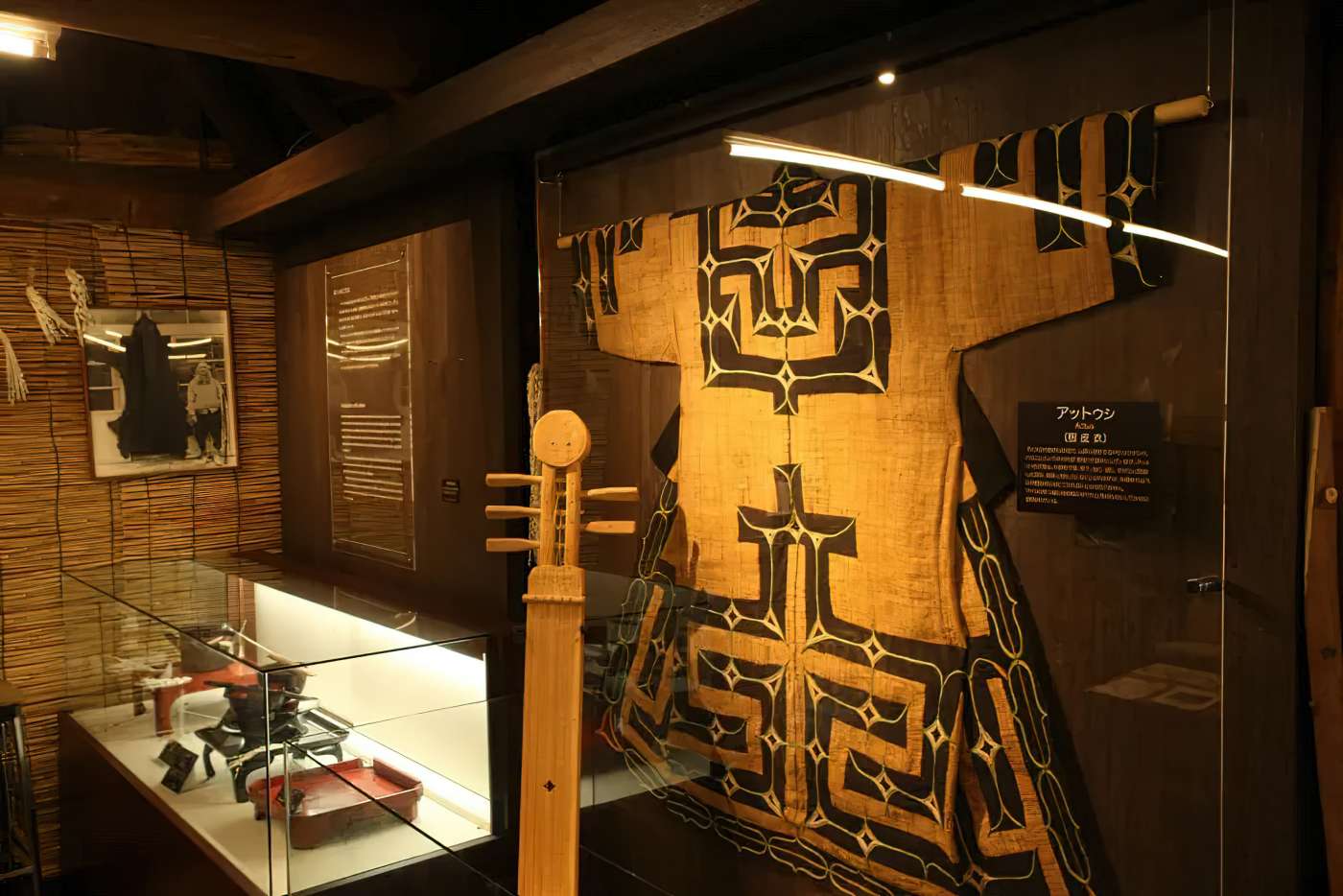
The embroidery patterns on Ainu clothing are unique and symbolic.
Photo credit: Akanko Ainu Kotan
Similar to the Shinto religion, the Ainu believe that spirits dwell within everything in nature, and some of the most important spirits for human beings are called kamuy. The Ainu belief goes even deeper. Some kamuy, such as apehuci kamuy, take on an anthropomorphic role, and many are seen as gifts. Apehuci kamuy is the goddess of the hearth. As an important part of every Ainu home, the gift of the hearth’s fire must be respected and kept pure to receive this precious gift.
The iyomante is an important Ainu cultural ritual based on the idea of sending the spirit of the kamuy back to kamuymosir (the kamuy realm). A bear cub is raised to age one or two in the same manner as an Ainu child. When it comes time to perform the ritual, the bear is sent back to kamuymosir with gifts. The bear itself is also seen as a gift, as it provides meat for the village, and also invites other kamuy to visit. This ritual was banned in a bid to assimilate Ainu into Japanese culture.
The Ainu language is also incredibly unique, having little in common with Japanese and not belonging to any major language group. It was once an oral language, but now uses either the Latin alphabet or a modified version of the Japanese writing system katakana. It also uses unique characters that were never present in the Japanese language. Ainu culture also features intricate wood carving, embroidery, dancing and music that visitors can experience in Hokkaido.
Discovering Ainu culture at Akanko Ainu Kotan
At Lake Akan, visitors will find a large Ainu kotan (settlement) inhabited by about 120 people in 36 residences. As a safe place for Ainu to continue their traditions and develop their culture, it also serves as teaching grounds where visitors can experience the Ainu lifestyle.
Within the kotan, there are 20 folkcraft shops selling hand carved wooden bears, embroidered goods, crafts, deer leather goods and other special Ainu souvenirs.
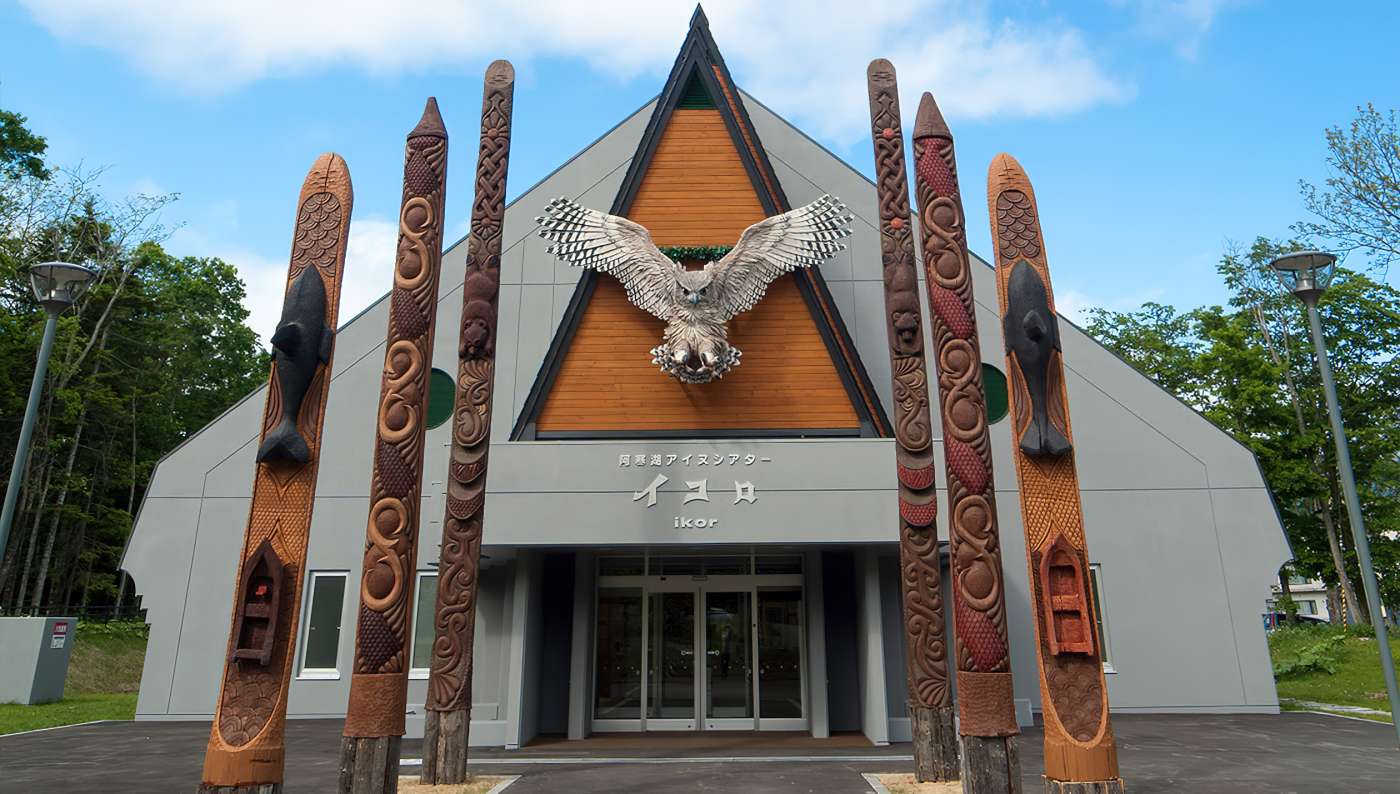
Ikor, an indoor theater, displays indigenous performances in a traditional Ainu way.
Photo credit: Akanko Ainu Kotan
Ikor, in the Ainu settlement, is Japan’s first indoor theater specializing in Ainu culture. The audience sits in a circle around a stage with a fire at the center. This is where the performers present their ikor (treasures) and stories handed down throughout the generations to visitors, letting them share in unique aspects of Ainu culture.
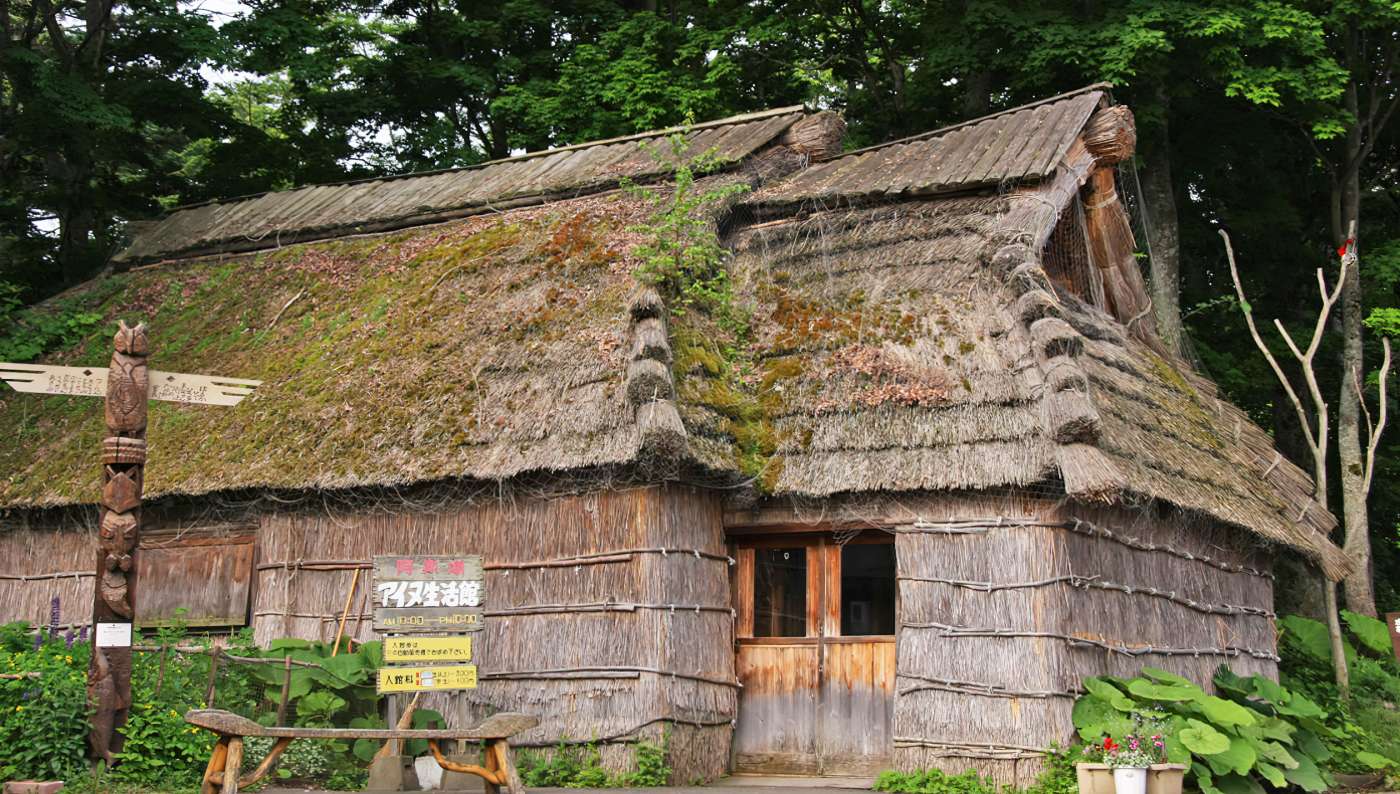
A traditional Ainu dwelling, or “cise,” could house 4-5 people.
Photo credit: Akanko Ainu Kotan
Within the kotan settlement, visitors can see a recreated “cise,” a traditional Ainu house that could fit 4–5 people. Seeing this traditional home gives visitors an understanding of how Ainu people lived in harmony with nature.
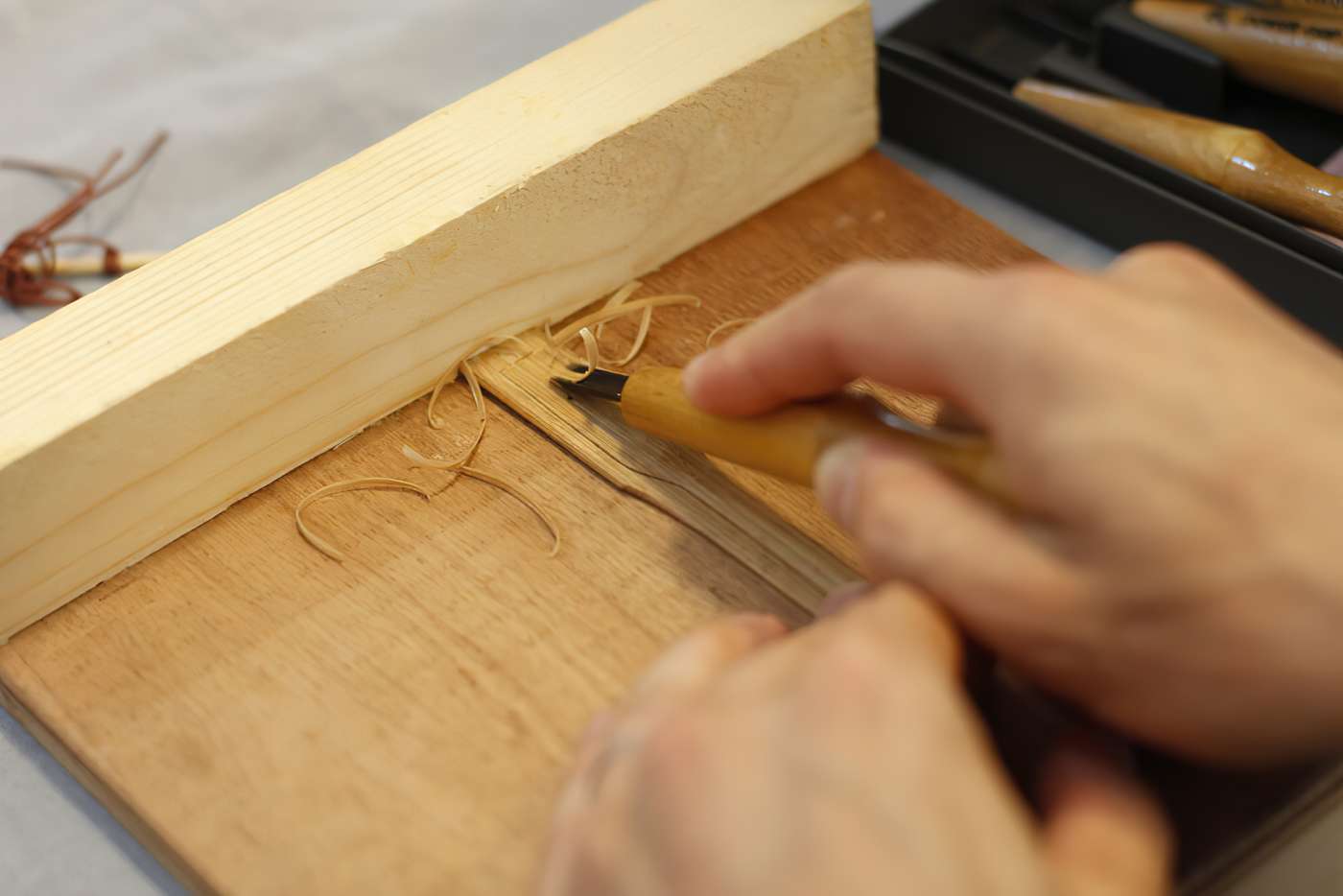
Visitors can make their own mukkuri and learn to play it.
Photo credit: Akanko Ainu Kotan
Here visitors can also take part in many hands-on experiences, such as a class on wood carving, mukkuri (mouth harp) making and embroidery, to create pieces of fascinating Ainu culture they can bring home.
Exploring deep indigenous heritage at Upopoy
Upopoy National Ainu Museum and Park is a national center for the revival and development of Ainu culture. It’s located on the bank of Lake Poroto, where visitors can wander from building to building in this beautiful park to discover Ainu culture.
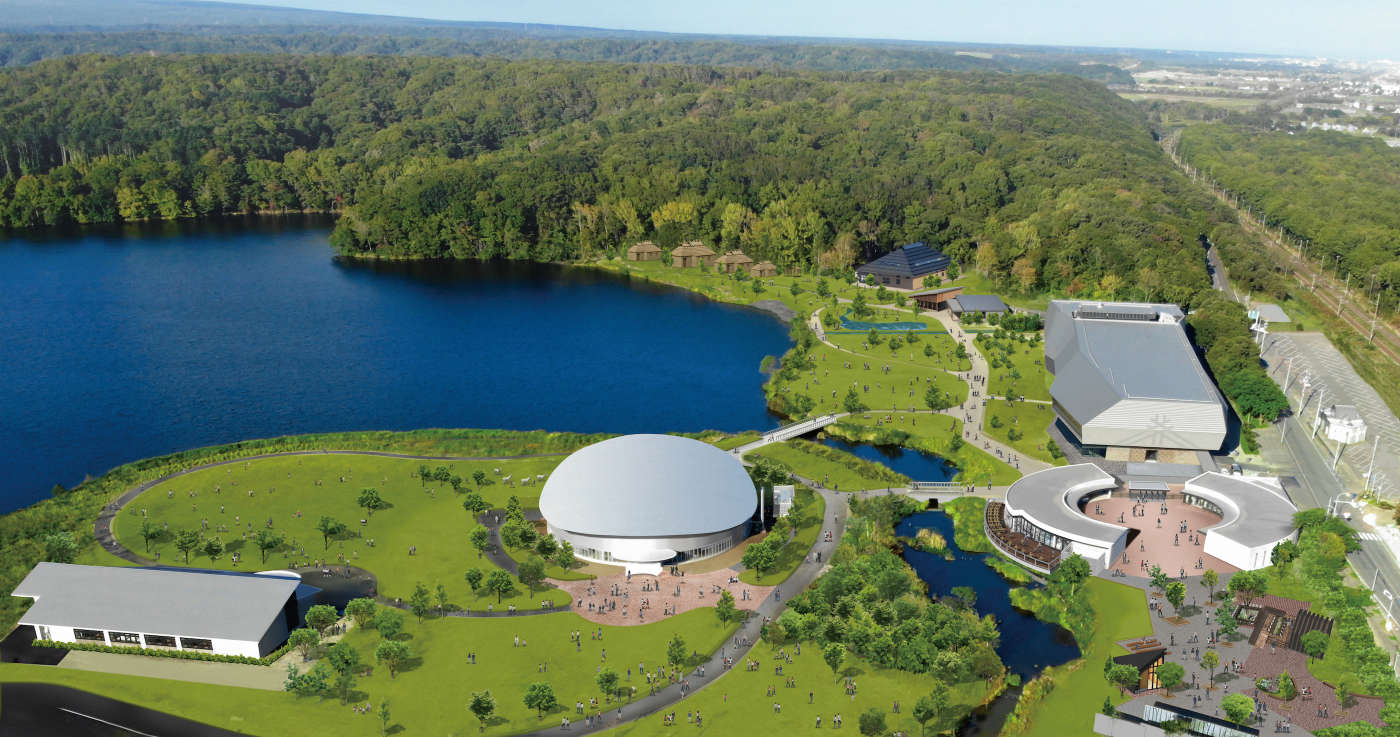
Every part of Upopoy National Center for the revival and development of Ainu Culture is in harmony with nature.
Photo credit: The Foundation for Ainu Culture
The goals of the center are to build a society where Ainu pride is recognized, raise awareness of Ainu history and culture, and help forge a future for Ainu culture. Walking through the exhibitions allows visitors to explore Ainu history and culture from an Ainu perspective.
Short films are available that detail the animals and natural phenomena (such as lightning) that are considered kamuy spirits, as well as aspects of the Ainu experience and Ainu crafts that are garnering attention worldwide. The permanent exhibition focuses on six themes: language, universe, lives, history, work and exchange, while the special exhibition room features displays relating to past and current research into Ainu culture.
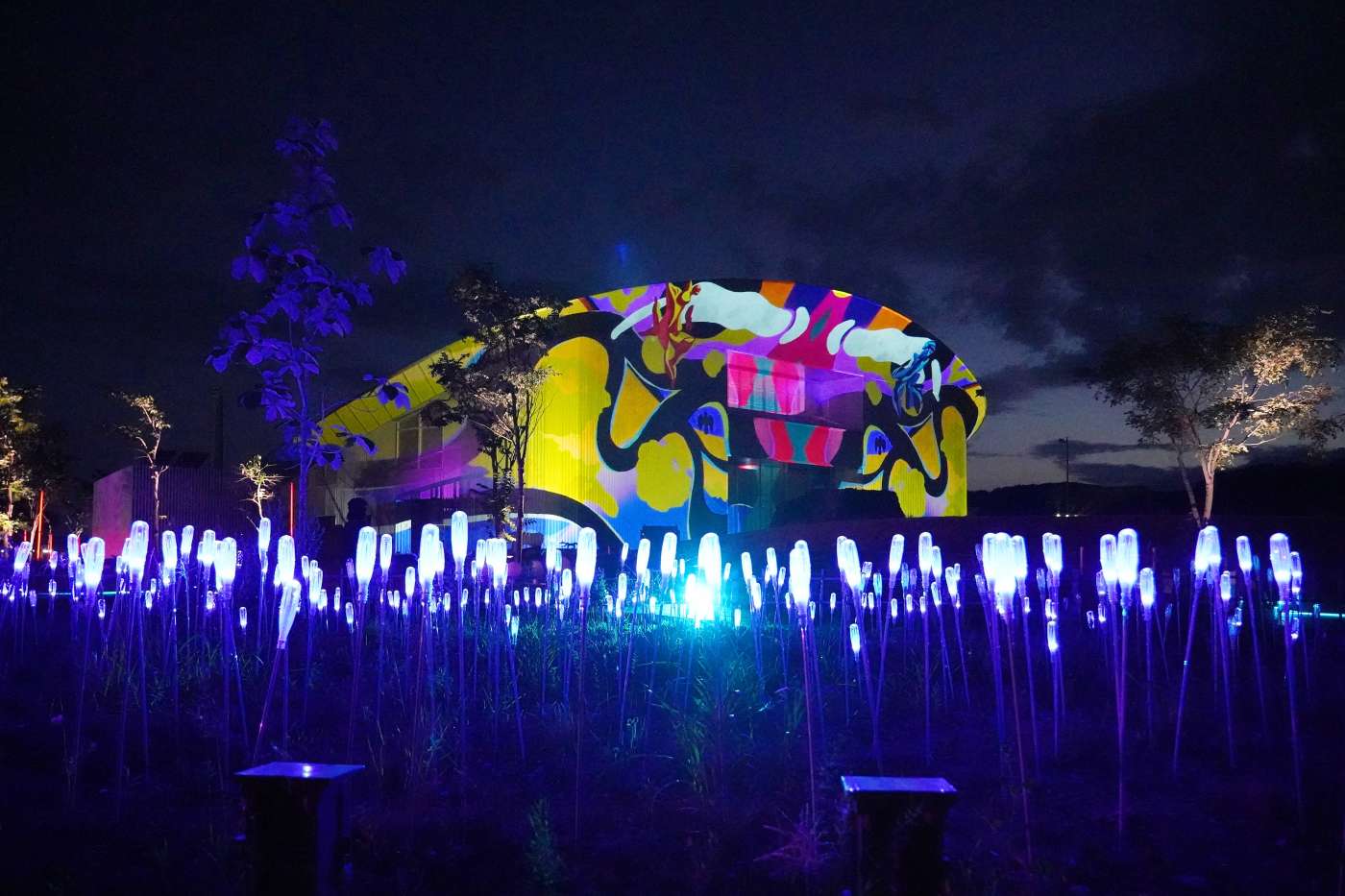
Futuristic technology shines light on the creation myth as told by the Ainu.
Photo credit: Upopoy
Archery experiences, traditional clothing wearing, mukkuri making, music and dance performances, plant lectures, embroidery and pattern learning, and other engaging activities are all available to give visitors a true feel for the traditional Ainu way of life.
Time travel with the Ainu through a local experience
The Adventure Hokkaido day hike in Asahikawa provides a perfect Ainu nature experience.
The tour takes visitors to Japan’s first Ainu museum, Kawamura Kaneto Ainu Museum. This museum was founded in 1916 by a private individual desperate to ensure the survival of the Ainu way of life.
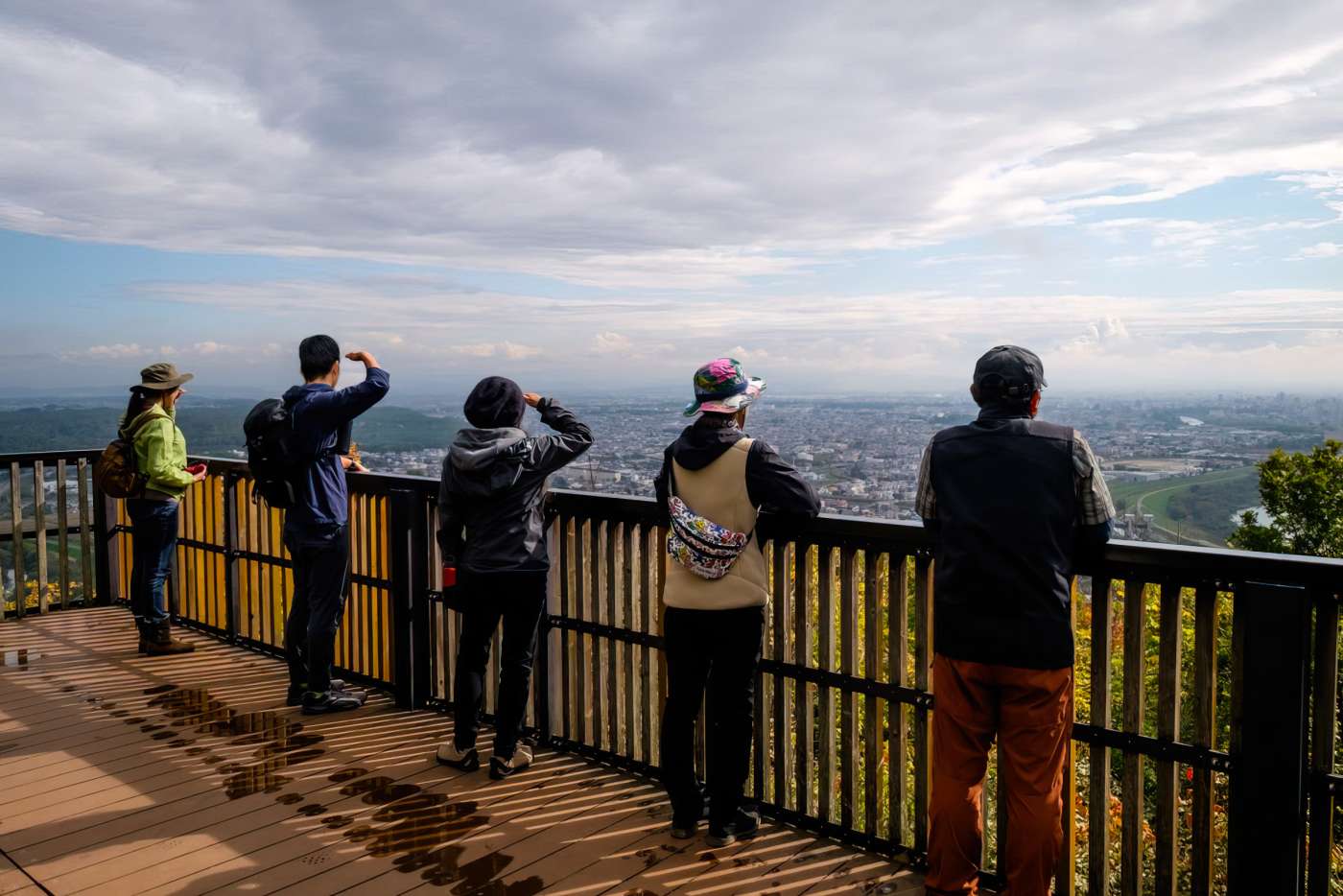
Spectacular views await on the one-day Ainu culture hike.
Photo credit: Adventure Hokkaido
Events are held at the site to celebrate certain aspects of Ainu culture, as well as workshops to create Ainu crafts. The museum continues to be in the hands of Kaneto Kawamura’s family, and they continue to promote the rights of Ainu people.
Lunch served in a traditional Ainu home called a “cise” is included on the tour, as well as a trip to Arashiyama. This is a sacred place to the Ainu. In the Ainu language, the mountain is known as Cinomisir, which roughly translates to “the mountain where we pray.”
Traveling by foot to a museum that has been around for more than 100 years to see ancient fish preserving techniques, in addition to hiking up a culturally significant mountain, will take visitors back in time to when Ainu culture all began.
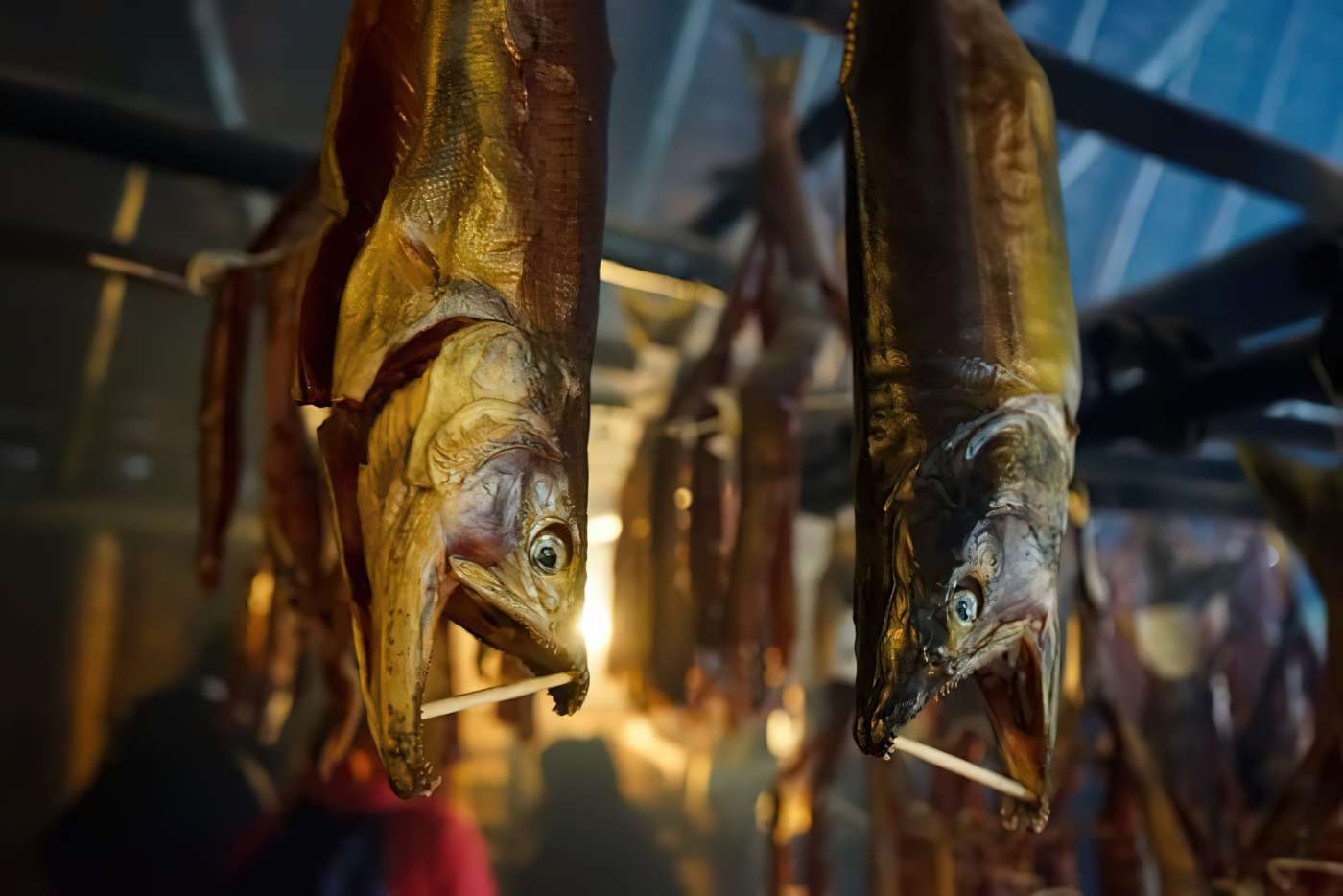
Traditionally, Ainu were hunter-gatherers, preserving fish and other meats to last through the winter.
Photo credit: Adventure Hokkaido
More to explore in Hokkaido and beyond
Hokkaido is home to magnificent scenery in every season. Particularly relevant for outdoor adventurers and those interested in sports, as it has powdery slopes for skiing, rapids for rafting and cycle routes galore. There are also activities for those who want to give themselves a cultural workout too, including many different kinds of museums, art galleries and historically relevant cultural experiences.
Hokkaido offers enough intrigue and activities for any length of visit, and with a growing sentiment of Ainu pride, visitors can enjoy a truly unique cultural experience while remaining highly active, all in the same trip.
Business hours
Due to measures to prevent the spread of COVID-19, business hours may be subject to change; please check with the venues before visiting.
Information
Akanko Ainu Kotan |
Upopoy National Ainu Museum and Park |
Adventure Hokkaido |




























































